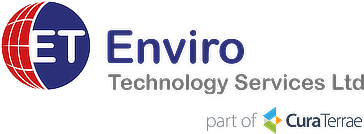How Smart Cities tackle air pollution
We discuss how Smart Cities could employ IoT technology to improve the air we breathe and the environment we live in.
What are Smart Cities?
A smart city is an urban environment where traditional networks and services are made more efficient with the use of digital solutions for the benefit of its inhabitants and business. Key components of a smart city may include the integration of information and communication technologies, data analytics, sensors, and other connected devices to optimise the delivery of public services such as transportation, energy, healthcare, and security.
Combating Air and Noise Pollution
Common aims of Smart Cities are to improve the quality of life of citizens and reach European energy and climate targets.
Air and noise pollution stand out as significant threats to public health. Air pollution has been strongly linked to lung cancer, heart attacks, and strokes, dementia, as well as even neurological conditions and elevated crime rates. Internet of Things (IoT) technology has a vital role to play in mitigating these environmental hazards and improving public health.
Smart Cities leverage data and technology to optimise urban planning. By integrating transportation systems, energy management, and waste disposal, cities can streamline operations and reduce their carbon footprint. This holistic approach helps minimise pollution sources and enhance overall air quality.
One of the major contributors to urban air pollution is vehicular emissions. Smart Cities often employ intelligent traffic management systems that optimise traffic flow, reduce congestion, and enhance fuel efficiency. This not only decreases air pollution but also eases noise levels in urban areas.
Real-time Air Quality Monitoring
IoT devices equipped with air quality sensors can be strategically placed throughout the city to provide real-time data on air quality. This information enables authorities to identify pollution hotspots and take immediate corrective actions.
By analysing historical data collected through IoT devices, city planners can develop predictive models for air quality. This proactive approach allows for timely interventions, such as implementing traffic restrictions or adjusting industrial operations to prevent potential pollution spikes.
IoT and Noise Pollution Management
Smart Cities can integrate noise monitoring sensors across public spaces to constantly measure and analyse noise levels. This data helps in identifying areas with high noise pollution and implementing targeted interventions.
Using IoT data, urban planners can design public spaces with noise reduction in mind. This includes incorporating green spaces, sound barriers, and optimising building layouts to minimise the impact of noise pollution on residents.
Reduced air pollution levels lead to a direct improvement in respiratory health. By leveraging IoT technology, we can create environments where citizens breathe cleaner air, reducing the prevalence of respiratory diseases. Lower noise levels also can contribute to a better quality of life for urban residents as they allow for improved sleep and reduced stress.
By adopting intelligent solutions for air and noise pollution management, cities can create healthier and more sustainable communities.
Predictive Analytics for Air Quality Management
Predictive analytics also plays a crucial role in the realm of Smart Cities, particularly in the context of air quality management. Here's a more detailed explanation of how predictive analytics can be employed to prevent and mitigate air pollution:
Predictive analytics begins by analysing historical data collected through IoT devices, such as air quality monitoring sensors deployed across the city. This data encompasses various parameters like pollutant levels, meteorological conditions, and human activities that contribute to pollution.
By leveraging advanced analytics tools, city planners can identify patterns and trends in the historical data. For example, they may observe that certain areas experience higher pollution levels during specific times of the day, seasons, or in response to particular events, such as heavy traffic or industrial activities. Predictive analytics involves correlating air quality data with other relevant factors, such as traffic patterns, industrial operations, and meteorological conditions. This correlation helps identify potential causative factors for spikes in pollution levels.
Development of Predictive Models and Early Warning Systems
Based on the insights gained from historical data analysis and correlation studies, predictive models are developed. These models use algorithms to forecast future air quality conditions based on anticipated changes in contributing factors. For instance, the model may predict increased pollution levels during rush hours or under specific weather conditions.
Once predictive models are established, cities can implement early warning systems. These systems can issue alerts to relevant authorities and the public when conditions are forecasted to lead to a deterioration in air quality. This proactive approach enables timely interventions to prevent or minimise the impact of pollution events.
Adapting Industrial Regulations
Predictive analytics can help authorities anticipate periods of high pollution risk and implement adaptive regulations. This might involve adjusting industrial operations, temporarily restricting certain activities, or enhancing emission control measures during forecasted pollution peaks.
By incorporating predictive analytics into air quality management strategies, Smart Cities can move beyond reactive responses and proactively address environmental challenges. This not only improves the effectiveness of pollution control measures but also contributes to a healthier and more sustainable urban environment.
How we can make Smart Cities a reality & The bettair® Node
bettair® Nodes are novel devices that permit, for the first time, the mapping of air pollution with high accuracy and in high resolution at a previously unimaginable scale. The bettair® network provides invaluable insights about how to mitigate air pollution. This is as they measure up to 12 air quality indicators as well as ambient noise level and other environmental parameters.
These multi-sensor devices operate autonomously, and each sensor transmits its data directly to a server for processing in the cloud. bettair® Nodes can measure various air pollutants, as well as ambient noise level and other environmental parameters.
Nodes are composed of the latest generation of gas sensors to measure (ppb or µg/m3): NO, NO2, CO, O3, SO2,H2S, NH3, Particulate Matter (µg/m3) including PM1, PM2.5 and PM10, CO2 (ppm or µg/m3), VOCs, Noise, temperature, humidity, and pressure.
One of the keys to the reliability and zero maintenance cost of bettair® Nodes is centralised processing. Contamination data are treated through a unique post-processing algorithm. This algorithm provides accurate measurements of several air quality indicators with accuracy similar to that of traditional equipment, but at a fraction of the price.
The static node is a huge step forward for connectivity, autonomy, and integration, and it boasts advanced post-processing, and an impressive Pearson correlation (R2> 0.9) when compared to traditional air quality monitoring equipment. Enviro Technology recently became the sole distributor of the bettair® Node for UK and Ireland.

